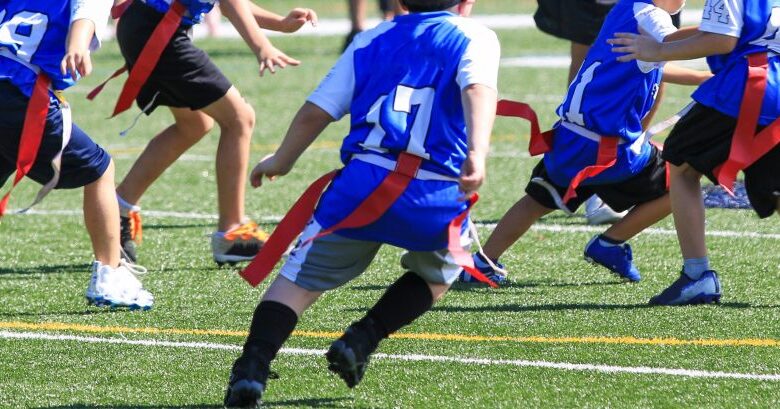Youth Sports Forecast 2025: What Can We Expect for the Next Generation of Athletes?

Have you ever wondered what youth sports might look like in 2025? With technology evolving at lightning speed and young athletes becoming more ambitious than ever, the landscape of youth sports is shifting in fascinating ways. Parents, coaches, and communities are all watching closely because these changes don’t just impact games on the field—they also shape the health, confidence, and futures of millions of kids worldwide.
In this article, we’ll take a deep dive into the trends, challenges, and opportunities that will define youth sports in 2025. Whether you’re a parent cheering from the sidelines, a coach planning for the future, or a young athlete dreaming of big leagues, you’ll find plenty of insights here.
The Growth of Youth Sports in 2025
Youth sports have always been a key part of childhood, but in 2025 the participation levels are expected to grow even more. Families now recognize the role sports play in building teamwork, resilience, and leadership skills. Communities are also investing more in recreational centers and school programs, making opportunities more accessible.
At the same time, the sheer variety of sports has expanded. Beyond the traditional games like soccer, basketball, or baseball, newer sports such as pickleball, esports, and even drone racing are carving out spaces for younger players. This diversification means more kids will find an activity that fits their interest and personality.
Technology as a Driving Force
Technology has completely transformed how young athletes train and compete, and by 2025 this will only accelerate. Wearable devices are tracking performance, sleep, and recovery times. Virtual coaching platforms are making it easier for kids in remote areas to access quality training. Even AI-powered video analysis is helping players fine-tune their skills in ways that were once available only to professional athletes.
Imagine a young soccer player in a small town reviewing her practice performance through real-time feedback on her smartwatch. Or a basketball player using VR simulations to practice game scenarios from home. These tools not only boost performance but also reduce the risk of overtraining and injuries.
Mental Health Becoming a Priority
In past decades, youth sports often emphasized winning at all costs. Thankfully, by 2025 the focus is shifting. Mental health is now a priority, and coaches and organizations are acknowledging that emotional well-being is just as important as physical strength.
Sports psychologists are increasingly integrated into youth programs. Teams are adopting workshops on stress management, goal setting, and dealing with pressure. Schools are also working to strike a balance between academics, athletics, and personal life, ensuring kids don’t burn out before they reach their prime.
The Push for Inclusivity
Youth sports in 2025 are becoming more inclusive. No longer is participation limited by gender, ability, or background. Programs are focusing on creating safe spaces for kids with disabilities, girls in male-dominated sports, and children from underprivileged communities.
Adaptive sports are expanding, giving every child a chance to compete and belong. The rise of mixed-gender teams at younger ages is also helping break down barriers and stereotypes early on. As inclusivity grows, so does the power of sports to teach acceptance and unity.
Health and Safety Concerns
One major focus for the future of youth sports is safety. Parents and coaches are becoming more aware of the risks tied to overtraining, concussions, and other long-term injuries. In 2025, there will be stricter protocols for head injuries, mandatory rest periods, and better education for parents and young athletes about recognizing warning signs.
New equipment designed to minimize impact injuries is also on the rise. From safer helmets to advanced turf fields, these innovations aim to give kids the thrill of competition without sacrificing their long-term health.
The Influence of Esports
It may sound unusual to include video gaming in the same breath as soccer or baseball, but esports have firmly entered the youth sports arena. By 2025, structured esports leagues for kids and teens are growing across schools and communities.
Esports teach many of the same values as traditional sports—teamwork, strategy, and discipline—while appealing to a different type of athlete. Parents are slowly recognizing its legitimacy, especially as scholarship opportunities and career paths in gaming expand.
Parental Involvement and Expectations
Parents have always played a huge role in youth sports, but by 2025 expectations are changing. More parents now realize the dangers of pushing too hard. The focus is gradually shifting from scholarships and professional dreams to personal growth and enjoyment.
However, parental involvement is also evolving with technology. Apps now allow parents to track training schedules, nutrition, and even performance metrics. While this helps with organization, it also raises concerns about whether kids might feel too much pressure from constant monitoring.
Community and School Partnerships
One exciting development in 2025 is the collaboration between schools and community organizations. Instead of working separately, many now pool resources to ensure sports programs are affordable and accessible. This helps reach children who might otherwise be excluded due to costs.
Community-driven leagues are also giving kids more recreational options outside of highly competitive environments. This way, children can enjoy sports casually without the stress of constant performance. The shift balances competition with fun, making sports a sustainable part of childhood.
Scholarships and Future Pathways
For older youth athletes, 2025 brings more opportunities for scholarships, both in traditional sports and emerging areas like esports. Universities and colleges are broadening their athletic programs, opening doors for a more diverse group of students.
At the same time, organizations are investing in mentorship programs to help young athletes transition into adulthood. Not every child will go pro, but the skills learned from sports—discipline, time management, and leadership—translate into careers and education.
The Role of Social Media
Social media has already changed how youth sports are experienced, and in 2025 its influence will only grow. Platforms like TikTok and Instagram are showcasing young athletes to large audiences, sometimes even attracting scouts and sponsors.
However, this comes with both opportunities and risks. While exposure can boost confidence and open doors, it can also create unhealthy pressure and comparisons. Coaches and parents will need to guide kids on responsible social media use, ensuring it remains a positive tool.
Rising Costs and Accessibility Challenges
Even with progress, one challenge remains: affordability. Travel teams, equipment, and specialized coaching can be expensive. By 2025, the gap between elite programs and community leagues might widen further unless steps are taken.
Luckily, many organizations are addressing this by offering financial aid, equipment-sharing programs, and local recreational leagues. The focus is shifting toward making sure every child, regardless of family income, has a chance to play.
Globalization of Youth Sports
Youth sports in 2025 aren’t limited to local fields anymore. Thanks to digital platforms and international competitions, kids are connecting with peers worldwide. Online tournaments, cultural exchange programs, and global training camps are introducing young athletes to diverse perspectives.
This exposure not only enriches athletic development but also teaches cultural understanding. A young basketball player in Texas might compete against a team from Japan through a virtual league, gaining both experience and global friendships.
Balancing Academics and Athletics
Balancing sports with academics has always been tricky, but in 2025 schools are getting more creative with solutions. Flexible schedules, online tutoring, and mentorship programs are helping student-athletes manage both responsibilities.
The goal is to ensure that pursuing sports does not come at the expense of education. With better balance, kids can succeed in both classrooms and competitions without feeling overwhelmed.
Coaching in 2025
Coaches are the backbone of youth sports, and their role in 2025 is evolving. No longer are they just focused on drills and tactics. They are becoming mentors, guiding young athletes in character development, mental health, and personal growth.
Training programs for coaches now include emotional intelligence, communication, and safety awareness. This holistic approach ensures that children benefit not just from skill development, but also from life lessons that stay with them forever.
The Future of Youth Sports Facilities
Sports facilities in 2025 are designed with more than just competition in mind. Communities are investing in multi-purpose centers that include fitness, wellness, and recreational areas. These facilities encourage kids to explore multiple sports and stay active year-round.
Green initiatives are also shaping facility design. Eco-friendly stadiums, solar-powered fields, and sustainable materials are becoming standard, blending sports with environmental responsibility.
Youth Sports and the Economy
Believe it or not, youth sports are a massive economic driver. By 2025, the industry is projected to be worth billions. From equipment sales to travel tournaments, entire communities benefit from the growth.
However, this also raises questions about commercialization. While the economic boom creates jobs and opportunities, it’s important to ensure that the true spirit of youth sports—fun, learning, and connection—remains intact.
What Youth Sports in 2025 Really Mean
When we look at all these trends, it’s clear that youth sports in 2025 are about more than just games. They represent a holistic system that nurtures kids physically, mentally, and socially. The emphasis on inclusivity, safety, and balance reflects a positive step forward.
Kids in 2025 won’t just learn how to dribble a ball or swing a bat. They’ll learn resilience, empathy, and confidence that will carry them into adulthood. And as communities, parents, and coaches, our role is to support them every step of the way.
Final Thoughts
So, what does the youth sports forecast for 2025 tell us? It paints a future filled with opportunities and challenges. Technology, inclusivity, and mental health will lead the charge, while affordability and balance remain areas to watch.
The good news is that youth sports continue to evolve with the needs of the new generation. As long as we prioritize fun, learning, and safety, the next wave of athletes will thrive both on and off the field.
youth sports forecast 2025



